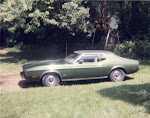Wednesday, October 10, 2012
Normal Crosswalk Safety
To the extent that crosswalks in Normal are used, they could be made safer. There is new technology to do this: timers that count down the time left to get across, flashing lights on the crosswalk pavement, and imbedded plastic designating the crosswalk area that lasts much longer than reflective paint. There is also the strategy of allowing pedestrians to start crossing before the drivers (going the same direction) are allowed to proceed. This probably helps reduce the number of pedestrians getting hit by drivers making turns. If people are being encouraged to walk rather than drive, we should take more steps (pun intended) to make it safer.
Saturday, October 6, 2012
Normal Tweets
There are plans to use tweets as a public suggestion box. For example, collecting tweets that originated in Chicago and searching for key words that would help city staff identify problems (people tend to tweet about what's not going well).
There probably wouldn't be hundreds of tweets originating in Normal about town-related problems people are experiencing, but there might be some. I wonder how whiny we would sound . . .
"There are too many leaves on the grass!"
"Why do we have to listen to train whistles at night? I'm trying to sleep."
"Why can't all the stoplights be coordinated so I can speed down the street without stopping?"
"Who painted these bird heads on the streets? I don't like them."
"Why is my water bill now higher than my electric bill?"
"Why do they flush the hydrants in the middle of the night?? I'm trying to sleep."
"Why do they pick up garbage so early? I'm trying to sleep."
There probably wouldn't be hundreds of tweets originating in Normal about town-related problems people are experiencing, but there might be some. I wonder how whiny we would sound . . .
"There are too many leaves on the grass!"
"Why do we have to listen to train whistles at night? I'm trying to sleep."
"Why can't all the stoplights be coordinated so I can speed down the street without stopping?"
"Who painted these bird heads on the streets? I don't like them."
"Why is my water bill now higher than my electric bill?"
"Why do they flush the hydrants in the middle of the night?? I'm trying to sleep."
"Why do they pick up garbage so early? I'm trying to sleep."
Wednesday, October 3, 2012
Normal Opportunity Area
The report "Are We There Yet? Creating Complete Communities for 21st Century America" is about determining how close we are to having communities that provide what people need. In the section about "opportunity areas" -- areas with "moderate density housing or jobs" and "neighborhoods that ...can lead to improved connectivity and increased rates of walking, biking, and transit use at the regional scale" -- Bloomington-Normal ranks 4th in "Growth Opporunity Areas Compared to Region" for regions under 500,000.
The report includes a set of goals for becoming a "complete community," categorized under goals for creating homes near transportation providers ("living"), goals for regional economic growth ("working"), goals for reducing dependence on automobiles ("moving"), and goals for supporting healthy lifestyles ("thriving"). As I read through the specific goals in each category, I was pleased to find that Normal shares many of them. For example, having the Uptown Station centrally located relative to ISU and the surrounding neighborhoods, having many college graduates to provide "new talent" and having a wide range of employment opportunities, efforts to making walking and biking safe, and promoting access to healthy food, promoting physical activity, and providing access to arts.
Normal isn't quite "there yet" but we're getting there!
The report includes a set of goals for becoming a "complete community," categorized under goals for creating homes near transportation providers ("living"), goals for regional economic growth ("working"), goals for reducing dependence on automobiles ("moving"), and goals for supporting healthy lifestyles ("thriving"). As I read through the specific goals in each category, I was pleased to find that Normal shares many of them. For example, having the Uptown Station centrally located relative to ISU and the surrounding neighborhoods, having many college graduates to provide "new talent" and having a wide range of employment opportunities, efforts to making walking and biking safe, and promoting access to healthy food, promoting physical activity, and providing access to arts.
Normal isn't quite "there yet" but we're getting there!
Subscribe to:
Posts (Atom)






